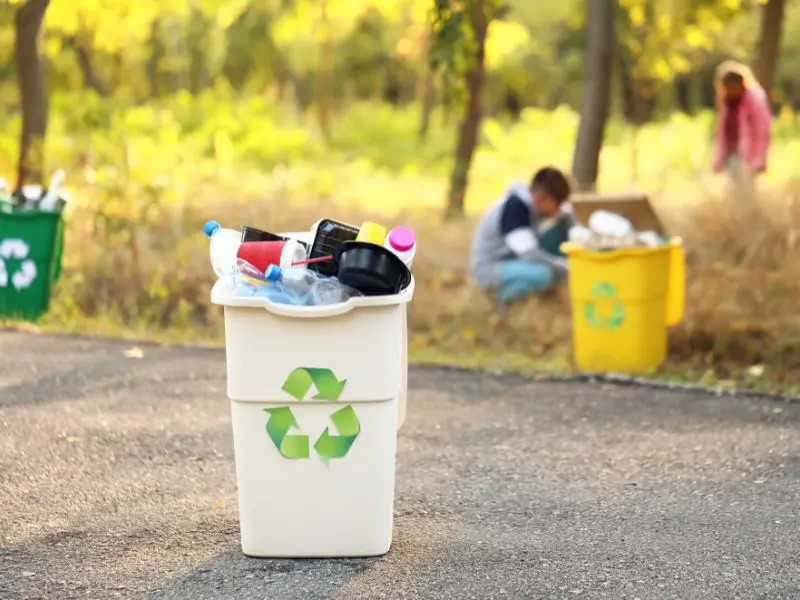Whether you play with your kids, family, or friends, outdoor games can be a great way to foster togetherness and form bonds while providing exercise and fresh air. Environmental games aim to get people thinking about how they can help the planet while still having fun. The outdoor setting of these games helps to reinforce a good environmental message that sticks with players long after the game is over.
In this article, we’ll share some games you can adapt to fit any gender and age.
5 Environmental Games You Can Play Right Now
1. Scavenger Hunt

Age: Children of all ages
Ideal participants: 2 or more
Location: Inside or outside (Parks and backyards are good spots.)
Why play: Scavenger hunts are a fun way for kids to solve problems. It helps them remember what their parents or teachers have taught them by giving them the means to practice what they have learned. A scavenger hunt can adapt to your child’s skill level and area of interest.
What is a scavenger hunt: A scavenger hunt is a game or competition between people or teams in which a list of things must be located within a certain amount of time.
How to play:
- Create a list of items to locate, hear, or perform. Include images, figures, and words in your list.
- Set up a time limit. This is optional, but if you want more thrill, go for it.
- Give the list to the kids and let them go on a hunt to see if they can discover, smell, or experience everything on it.
- The winner is the person or group that completes their task list first or who completes the most tasks before the time is up.
2. Litter Race

Age: Children of all age
Ideal participants: 2 or more
Location: Outdoors
Why play: This game will educate children about caring for the environment while also encouraging them to clean it up.
What is scavenger hunt: The litter race game gets people to pick up trash in the park, school playground, or neighborhood where it is played. The participants pick up trash in groups. Make sure to wear gloves to keep hands safe. Tell kids to stay away from sharp objects. Make sure kids use tools to pick up trash for more safety. The goal is to collect the most litter. The winner is the group or kid who picks the most trash.
How to play:
- Divide the kids into teams and pick a place to hold the race, like a park, school playground, or neighborhood street.
- See who can pick up the most trash as a team or individual.
- Weigh the garbage bags, count the bags, or count the stuff within each bag.
3. Journey Sticks
Age: Children of all ages
Ideal participants: 2 or more
Location: Nature or the great outdoors
Why play: Encourage children to cherish moments in nature.
What are Journey sticks: Journey sticks are a fun and tactile way of capturing the present journey. You may personalize your walking stick with unique embellishments and add to it every time you go for a stroll. Or, you can have each stick for every trip.
How to play:
- Let participants find their own 50 cm to 1 m long stick.
- Tell them to pick up things as you lead them through the woods. These things will remind them of their path along the forest.
- The children then gather feathers, dried flower heads, grass bark, leaves, and so on, attaching them and wrapping the wool around the stick.
- At the end of the trip, the kids can create stories using the items they’ve collected along the way. In addition, you can have people recall the location of certain things and guiding the rest of the group to the exact spot.
4. Camouflage is Everything
Age: Ideal for all ages
Ideal participants: 2 or more
Location: Nature
Why play: This game is fun, easy to start, and gives students a chance to “act out” this important winter survival skill. It can be played at any time of year and in different places.
What is Camouflage: Camouflage is a fun way to learn more about animal adaptations.
How to play:
Animals can hide because of their ability to blend with the environment. In this game, you want to test the participants’ ability to camouflage themselves. The volunteers will be tasked with camouflaging in dead leaves, earth, twigs, etc., on the chosen spot. The group leader then judges the best at camouflaging at the end.
5. Observation Space

Age: Ideal for all age
Ideal participants: 2 or more
Location: Indoors or Outdoors
Why play: This helps participants practice their observation skills.
What is Observation Space: The observation space is played by a small group of children that helps them observe something within a place.
How to play:
- Group the participants
- Provide them with a string circle or hoop and tell them to put it in a particular part of the woods. Tell them to observe what’s growing in the circle. Are there special things like feathers, pine cones, or other things that stand out?
- Write out all the observations
- The children share what they have observed in their circle with the rest of the group.
- Next week, the children return to their circle and look for changes.
Author’s Note
Playing environmental games outside has many advantages. These games offer a great way to encourage someone to be creative and explore the world around them. The fantastic thing about kids is their endless imagination. If you let them find something that can enhance their creativity, they will love it! Playing environmental games is not only fun, but it also helps the participants learn about their environment and appreciate nature.
Eco-Friendly Guides You Can Teach Your Kids: Eco Friendly Activities for Kids, Eco-Friendly Activities That Help Kids Learn About Sustainability, Best Earth Day Activities for Kids

